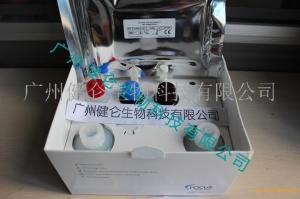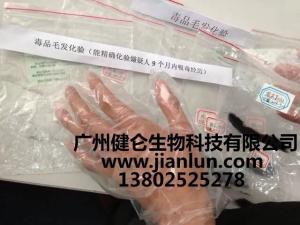


|



| 产地 | 英国进口 |
| 品牌 | 英国 |
| 货号 | |
| 保存条件 | 2-8℃ |
| 英文名称 | 2ml fever negative control staining suspension |
| 保质期 | 2年个月 |
产品规格
5ml/瓶
保质期:2年
| 染色菌悬液 | |
| 染色菌悬液包装为5ml/小瓶 | |
| 中文名称及用途 | 英文名称 |
| 布鲁氏菌 | Brucella |
| 热病抗原的染色菌悬液,用于检测、鉴定和定量血清中的布鲁氏菌特异性抗体 | |
| 流产布鲁氏菌 | Brucella abortus |
| 羊种布鲁氏菌 | Brucella melitensis |
| 热病阴性对照(2ml) | Febrile Negative Control (2ml) |
| 可与所有的染色菌悬液配合使用 | |
| 变形杆菌 | Proteus |
| 热病抗原染色菌悬液,用于检测、鉴定和量化血清中的立克次体抗体(某些变形菌与某些立克次体共用一部分抗原) | |
| 变形杆菌OX2 | Proteus OX2 |
| 变形杆菌OX19 | Proteus OX19 |
| 变形杆菌OXK | Proteus OXK |
| 热病阴性对照(2ml) | Febrile Negative Control (2ml) |
| 可与所有的染色菌悬液配合使用 | |
| 沙门氏菌 | Salmonella |
| 热病抗原的染色菌悬液,用于检测、鉴定和量化血清中的沙门氏菌特异性抗体 | |
| 肠炎沙门氏菌H(g,m) | Salmonella Enteritidis H (g,m) |
| 新港沙门氏菌H sp(e,h) | Salmonella Newport H sp (e,h) |
| 沙门氏菌(1,2,5) | Salmonella non-sp. (1,2,5) |
| 副伤寒沙门氏菌 A-H (a) | Salmonella Paratyphi A-H (a) |
| 副伤寒沙门氏菌 A-O (1,2,12) | Salmonella Paratyphi A-O (1,2,12) |
| 副伤寒沙门氏菌 B-H (b) | Salmonella Paratyphi B-H (b) |
| 副伤寒沙门氏菌 B-O (1,4,5,12) | Salmonella Paratyphi B-O (1,4,5,12) |
| 副伤寒沙门氏菌 C-H ( c ) | Salmonella Paratyphi C-H ( c ) |
| 伤寒沙门氏菌 H (d) | Salmonella Typhi H (d) |
| 伤寒沙门氏菌 O (D群) (9,12) | Salmonella Typhi O (Group D) (9,12) |
| 伤寒沙门氏菌 Vi | Salmonella Typhi Vi |
| 鼠伤寒沙门氏菌H (i) | Salmonella Typhimurium H (i) |
| 热病阴性对照(2ml) | Febrile Negative Control (2ml) |
| 可与所有的染色菌悬液配合使用 | |
| 热病阳性对照(2ml) | Febrile Positive Control (2ml) |
| 与a,b,c,d群沙门氏菌染色菌悬液配合使用 | |
| 伤寒沙门氏菌 Vi标准抗血清 | Salmonella Typhi Vi Standard Serum |
| 与伤寒沙门氏菌Vi染色菌悬液配合使用对凝集检测进行标准化。冻干管,重新溶至4ml。 |
在美国多州爆发的大肠杆菌感染病例可能是由切碎的Romaine Lettuce(长叶生菜/罗曼莴苣)导致的,如果消费者不知道自家的生菜是哪个品种,那么推荐立即扔掉不要再食用了。
目前CDC仍未确认本次大规模爆发的大肠杆菌病毒是由哪个种植者、供应商、经销商或品牌提供,但目前受污染的生菜只能追踪到亚利桑那州尤马地区。
CDC表示,大肠杆菌可以通过被污染的水或者食物传播,人感染之后可能会出现胃痉挛、腹泻和呕吐等症状,严重的可能引发肾衰竭。这些人都在3月22日到3月31日之间感染,年龄从12岁到84岁不等,大多数都为女性。
CDC表示目前全美有11个州35人患病,其中22个人病情严重,必须住院治疗。其中三名患者出现了肾功能衰竭。目前还没有死亡报告。
已报告病例的州有:宾夕法尼亚州(9人);爱达荷州(8人);新泽西州(7人);康涅狄格州(2人);纽约(2人);俄亥俄州(2人);维吉尼亚州(1人);华盛顿州(1人);密苏里州(1人);密歇根州(1人);伊利诺斯州(1人)。


Influencing factors
The structure of the bacterial cells and the permeability of their outer membranes, such as the permeability of the cell membrane, the size of the membrane pores, and the integrity of the cell structure, play a role in staining. In addition, the composition of the culture medium, the sterilization order, the content of the electrolyte in the staining solution, and the pH, the temperature, the action of the drug, and the like can also affect the staining of bacteria.
Category and Selection Edit
Dyes are divided into natural dyes and artificial dyes. Natural dyes include cochineal red, lichen pigments, litmus and hematoxylin, which are mostly extracted from plants, and their components are complex, and some have not yet been clarified. At present, mainly artificial dyes, also known as coal tar dyes, are mostly extracted from coal tar and are derivatives of benzene. Most dyes are colored organic acids or bases that are insoluble in water and readily soluble in organic solvents. To make them soluble in water, salts are usually made.
Dyes can be divided into four major categories of acid dyes, basic dyes, neutral (complex) dyes and simple dyes according to the nature of their ionization after ionization.
Acid Dyestuff
After ionizing these dyes, the dye ions are negatively charged, such as eosin, Congo red, phycoerythrin, aniline black, picric acid, and acid complex red, which can be combined with basic substances to form salts. When the glycosaminoglycans are decomposed to produce acid to lower the pH value, the positive charge of the bacteria increases. At this time, acid dyes are selected and easily stained.
Basic dye
After dyes of this type are ionized, the dye ions are positively charged and can combine with acidic substances to form salts. The basic dyes commonly used in microbiological laboratories are methylene blue, methyl violet, crystal violet, alkaline red, neutral red, malachite green, and scarlet, etc. In general, bacteria are easily stained with basic dyes.
Neutral dyes
The combination of acid dyes and basic dyes is called neutral (complex) dyes, such as Wright dyes and Gimsa dyes, which are commonly used for the staining of cell nuclei.
Simple dye
These dyes have low chemical affinities and cannot form salts with the substances they are dyed in. The dyeing ability depends on whether they are soluble in the dyed substance, because most of them are azo compounds that are insoluble in water but soluble in fat solvents. , such as Sudandan's dyes.